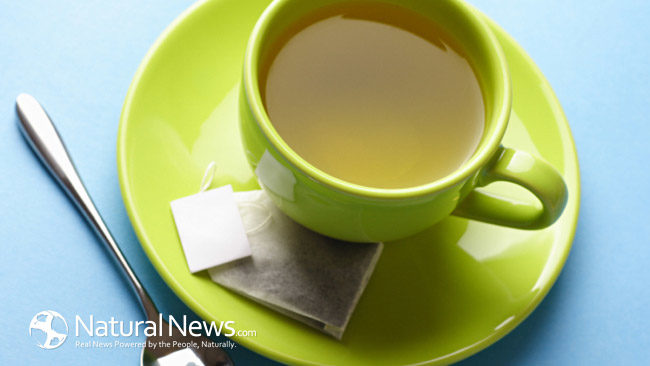During the warmer months, it can be difficult to quench your thirst. While water is a common recommendation to prevent dehydration (1), it can be tempting to reach for beverages that may not help to keep you hydrated. For some people, picking the wrong one can have severe consequences.
Fruit juice and soda, while tasty, can have undesired consequences when it comes to managing your blood sugar. While fruit juice may appear to be a healthy option, on average, most commercial fruit juices have about the same amount of sugar as soda, with some fruit juices that indicate that they are 100% real fruit weigh in with more sugar than traditional sodas (2). So, if water doesn’t appeal to you, and juice and sodas can wreak havoc on blood sugar levels, what is the healthier option?
Green tea: more than just for thirst quenching
Out of the different versions of tea that are available, green tea undergoes the least amount of oxidation during the processing procedure (3). The minimal processing required for green tea allows this variety to have higher levels of catechins than other types of tea (4).
Studies have suggested that a diet that is high in catechins can lower blood pressure, help in the fat oxidation process, and help to preserve good LDL-cholesterol levels (5). Catechins are also potent antioxidants, which help to mitigate the damage from free radicals within the body (5).
Green tea for a smaller waist
Several of the components in green tea have been shown to be beneficial when added to a healthy diet. One other benefit that has been identified of catechins is the thermogenic qualities that can help to trigger the body to use stored body fat for energy to use throughout the day (6). Drinking between four and five cups of green tea, when combined with a moderate level of activity, has been shown to help people to lose additional weight and can also reduce fat around the abdominal area (7).
Green tea can help you to manage your blood sugar
While obesity and being overweight have been identified as risk factors for developing type 2 diabetes (8), the components in a refreshing glass of green tea can not only help to reduce the abdominal fat that is linked to the development of diabetes (7), it can also help to lower blood sugar levels, particularly when eating starchy foods (9).
It is thought that the large quantity of green tea consumed by individuals residing in Asian countries may be the reason that the rates of obesity and type 2 diabetes are much lower than those found in the United States, where green tea is not as popular (10).
Antonia is a science enthusiast with a keen interest in health nutrition. She has been intensely researching various dieting routines for several years now, weighing their highs and their lows, to bring readers the most interesting info and news in the field. While she is very excited about a high raw diet, she likes to keep a fair and balanced approach towards non-raw methods of food preparation as well. Read more by Antonia here, and SUBSCRIBE!
Sources for this article include:
(1) Popkin, B. M., D’Anci, K. E., & Rosenberg, I. H. (2010). Water, hydration and health. Nutrition Reviews, 68(8), 439-458. www.ncbi.nlm.nih.gov
(2) Barclay, E. (2014). Fruit juice vs. soda? Both beverages pack in sugar, health risks. NPR: The Salt. www.npr.org
(3) Khan, N. & Mukhtar, H. (2013). Tea and health: Studies in humans. Current Pharmaceutical Design. 19(34). 6141-6147. www.ncbi.nlm.nih.gov
(4) Karoi, S. M., Wachira, F. N., Wanyoko, J. K., & Ngure, R. M. (2007). Antioxidant capacity of different types of tea products. African Journal of Biotechnology, 6(19), 2287-2296. www.ajol.info
(5) Heneman, K. & Zidenberg-Cherr, S. (2008). Some facts about catechins. Nutrition and Health Info-Sheet for Health Professionals. nutrition.ucdavis.edu
(6) Dullo, A. G., Seydoux, J., Girardier, L., Chantre, P., & Vandermander, J. (2000). Green tea and thermogenesis: Interactions between catechin-polyphenols, caffeine and sympathetic activity. International Journal of Obesity, 24(2), 252-258. www.nature.com
(7) Maki, K. C., Reeves, M. S., Farmer, M., Yasunga, K., Matsuo, N., Katsuragi, Y. … & Cartwright, Y. (2008). Green tea catechin consumption enhances exercise-induced abdominal fat loss in overweight and obese adults. The Journal of Nutrition, 139(2), 264-270. jn.nutrition.org
(8) Goran, M. I., Ball, G. D., & Cruz, M. L. (2003). Obesity and risk of type 2 diabetes and cardiovascular disease in children and adolescents. Journal of Clinical Endocrinology and Metabolism, 88(4), 1417-1427. www.ncbi.nlm.nih.gov
(9) Liu, K., Zhou, R., Wang, B., Chen, K., Shi. L., Zhu, J., & Mi, M. (2013). Effect of green tea on glucose control and insulin sensitivity: A meta-analysis of 17 randomized controlled trials. American Journal of Clinical Nutrition, 198(2). ajcn.nutrition.org
(10) Kim, H. M. & Kim, J. (2013). The effects of green tea on obesity and type 2 diabetes. Diabetes & Metabolism Journal, 37(3). 173-175. www.ncbi.nlm.nih.gov





